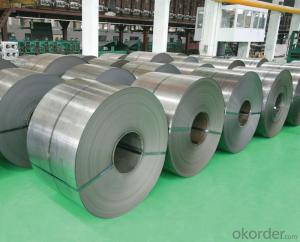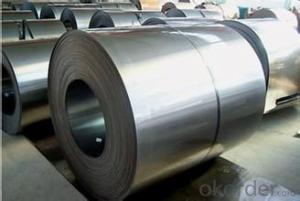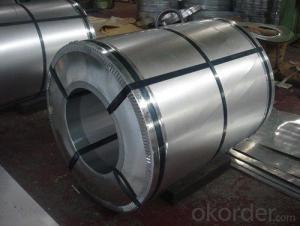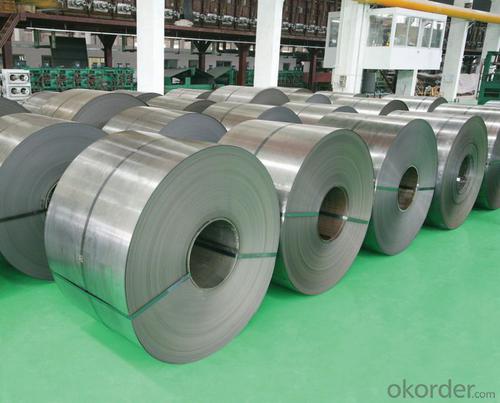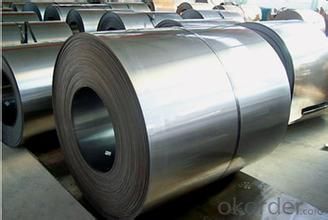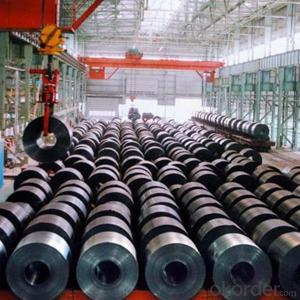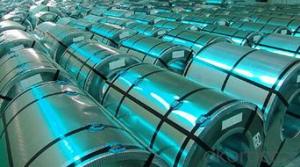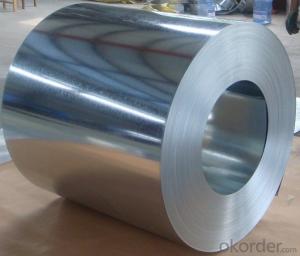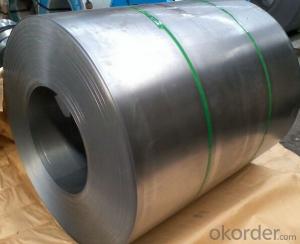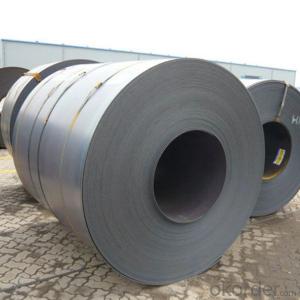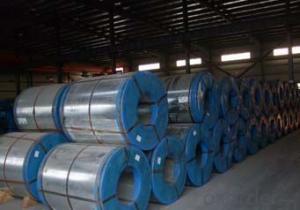Cold Rolled Steel with Best Price of China
- Loading Port:
- Shanghai
- Payment Terms:
- TT OR LC
- Min Order Qty:
- 50 m.t.
- Supply Capability:
- 10000 m.t./month
OKorder Service Pledge
OKorder Financial Service
You Might Also Like
1.Structure of Cold Rolled Steel Description:
The raw material of cold rolled steel coil/sheet is high quality hot rolled product, and after pickling continuous rolling, degreasing, annealing,skin pass,slitting and cut to length line etc. Along with it many kinds of new technology and new process of global cold rolling production have been applied. Therefore the quality of the goods could be guaranteed. The product is widely used in outdoor and interior decoration, furnishing manufacturing, home appliance, automobile etc.
2.Main Features of the Cold Rolled Steel:
• Excellent process capability
• Smooth and flat surface
• Workability, durability
• Excellent heat resistance performance
• High strength
• Good formability
• Good visual effect
3.Cold Rolled Steel Images
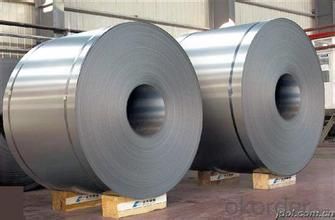
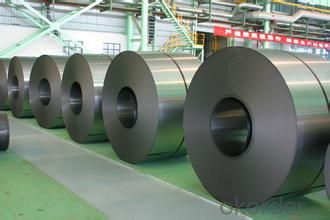
4.Cold Rolled Steel Specification
Standard:AISI,ASTM,DIN,GB,JIS,JIS G3302 ASTM 653M EN10142
Grade: Q195~Q345
Thickness: 0.16mm~1.5mm,0.16-1.5mm
Width: 1250,600-1250mm
Coil weight:3-12 MT
Coil ID:508/610mm
Chemical composition:
C | Si | Mn | Cr | Ni | P | S |
0.150 | 0.476 | 11.231 | 12.50 | 0.900 | 0.039 | 0.010
|
5.FAQ of Cold Rolled Steel
We have organized several common questions for our clients,may help you sincerely:
1.How about your company?
A world class manufacturer & supplier of castings forging in carbon steel and alloy steel,is one of the large-scale professional investment casting production bases in China,consisting of both casting foundry forging and machining factory. Annually more than 8000 tons Precision casting and forging parts are exported to markets in Europe,America and Japan. OEM casting and forging service available according to customer’s requirements.
2.How to guarantee the quality of the products?
We have established the international advanced quality management system,every link from raw material to final product we have strict quality test;We resolutely put an end to unqualified products flowing into the market. At the same time, we will provide necessary follow-up service assurance.
3. How long can we receive the product after purchase?
Usually within thirty working days after receiving buyer’s advance payment or LC. We will arrange the factory manufacturing as soon as possible. The cargo readiness usually takes 15-25 days, but the shipment will depend on the vessel situation.
- Q: How are steel coils inspected for dimensional accuracy after processing?
- Steel coils are inspected for dimensional accuracy after processing using various methods, such as manual measurement with precision tools, laser scanning technology, or automated vision systems. These inspection methods ensure that the dimensions of the steel coils meet the required specifications and tolerances, ensuring their quality and suitability for the intended applications.
- Q: What is the average cost of shipping steel coils?
- The average cost of shipping steel coils can vary depending on various factors such as the distance, weight, dimensions, mode of transportation, and any additional services required. To provide an accurate average cost, it would be necessary to consider these specific details.
- Q: What are the different coil packaging methods used for steel coils?
- Steel coils can be packaged using various methods to guarantee their protection and secure transportation. These methods also help optimize storage space. Some of the commonly used packaging methods for steel coils are as follows: 1. Strapping: Metal or plastic straps are used to secure the steel coils. This ensures stability and prevents unrolling or shifting during transportation. Strapping is suitable for smaller coils or when other packaging methods are also utilized. 2. Stretch wrapping: Steel coils are tightly wrapped using a stretch film. This technique provides excellent protection against dust, moisture, and other contaminants. It also keeps the coils tightly bound and prevents movement during handling and transportation. 3. Steel banding: Steel bands or straps are employed to secure the coils. This packaging method offers superior strength and durability. It is ideal for larger and heavier steel coils that require additional reinforcement. 4. Wooden crating: Particularly large or heavy steel coils are packaged in wooden crates. These crates provide enhanced protection against impacts, moisture, and other external factors. Wooden crating is commonly used for long-distance transportation or when coils need to be stored for extended periods. 5. Coil saddles: Specialized devices called coil saddles are used to package large coils securely. These devices prevent rolling or movement. Coil saddles are preferred when strapping or wrapping is not feasible. 6. Paper interleaving: Sheets of paper are placed between each layer of steel coils to prevent damage caused by friction. This method is commonly used for coils with a high surface finish or those susceptible to scratching. Each of these packaging methods offers distinct advantages and is chosen based on factors such as coil size, weight, transportation requirements, and desired level of protection. By employing these methods, steel coil manufacturers and distributors can ensure the safe arrival of their products in optimal condition.
- Q: I heard that titanium isn't the most hypoallergenic metal because it is treated and the chemicals can cause an allergic reaction. I also heard that surgical steel is the best because it is what is used in surgery and in hip replacement implants etc. Is this correct?I've always heard that titanium is best, but now I'm curious because surgical steel is much cheaper than titanium which can be expensive.Thanks
- There is a lot of debate in the piercing community about guns vs. needles. In my opinion, needle piercing from a reputable piercing shop is the best choice. This is because guns can harbor a lot of bacteria, especially if they are used on more than one person which they often are. Yes, guns are fast and efficient, but they can be unsafe at times. My first lobe holes were done with a gun. I cried forever because it burned so bad...even after days. They lady was so impersonal, and they used sterling silver which I found out that day I was allergic to. My other 4 holes are were done with a needle. I had trouble healing them because I used sterling silver (my stupid fault), but besides the allergy, they healed beautifully and were virtually pain free. I would recommend getting them pierced at an actual shop, not the mall. If I were you, I would chose niobium metal or titanium to avoid any type of allergy that could happen. Choose studs and not rings because they are easier to heal. Good luck!
- Q: What is galvanized steel coil?
- Galvanized steel coil, a type of steel, receives a layer of zinc coating to safeguard it against corrosion. The galvanization process entails immersing the steel coil in molten zinc, creating a protective layer on its surface. This layer not only prevents corrosion but also acts as a shield against scratches and other forms of damage. Due to its durability and rust resistance, galvanized steel coil finds widespread usage in industries such as construction, automotive, and manufacturing. It is commonly employed in the production of roofing materials, pipes, and automotive components, among other applications. In summary, galvanized steel coil offers a versatile and cost-effective solution for preserving the longevity and integrity of steel products.
- Q: How are steel coils inspected for thickness using ultrasonic testing?
- Ultrasonic testing is employed to inspect the thickness of steel coils, utilizing a non-destructive method. When conducting this process, a handheld ultrasonic thickness gauge is utilized to determine the thickness of the coil. The ultrasonic thickness gauge emits high-frequency sound waves that travel through the steel coil. These sound waves rebound from the opposite side of the coil, generating an echo. The time it takes for the echo to return to the gauge is measured and utilized to compute the coil's thickness. The gauge comprises a transducer responsible for emitting the sound waves and a receiver that detects the echoes. To ensure optimal acoustic contact between the transducer and the steel surface, the transducer is placed on the coil's surface, utilizing a coupling gel or oil. The transducer releases a brief burst of sound waves, which penetrate through the steel coil and reach the opposite side. If the sound waves encounter any variations or defects in the coil's thickness, they reflect back to the transducer. These echoes are detected by the receiver, and the time between the emission and reception of the sound waves is measured. By utilizing the known speed of sound in steel, the time taken for the sound waves to traverse the coil and return can be converted into a thickness measurement. This enables an accurate evaluation of the steel coil's thickness at different points. Ultrasonic testing is a dependable and efficient method for inspecting the thickness of steel coils. It permits swift measurements without causing any harm to the material, thereby making it ideal for quality control purposes and ensuring compliance with manufacturing specifications.
- Q: What are the applications of steel coils in the aerospace industry?
- Steel coils have various applications in the aerospace industry, primarily in the manufacturing of aircraft components. These coils are used to produce structural parts, such as frames, wings, and landing gear, due to their high strength and durability. Additionally, steel coils are utilized in the fabrication of engine components, including turbine blades and exhaust systems, as they can withstand extreme temperatures and pressures. Overall, steel coils play a crucial role in ensuring the safety and performance of aircraft in the aerospace industry.
- Q: More specifically steel wire (around 1/8 diameter). I'm doing a science fair project where I'm testing if concrete encased in steel has more fire resistance than steel by itself. However, I have no idea what the dimensions of concrete encased steel is so I can't scale down. And if I did have the dimensions I wouldn't know how to encase it around the steel wire (do I just poor concrete over it (heck I've never even used concrete)? Thanks for any help.
- Yeah, just pour the concrete over it, but make sure the steel is in the middle of the concrete (I'm sure you can figure out a way to do this). What you're thinking of is called steel rebar.
- Q: melting point, as compare to stainless steel
- Mild steel melting point is 1350-1530°C (2462-2786°F). Stainless steel is 1510°C (2750°F)
- Q: How are steel coils used in the manufacturing of solar panels?
- Steel coils are commonly used in the manufacturing of solar panels to provide structural support and stability. These coils are typically used to create the framework of the solar panel, ensuring that it remains rigid and durable. Additionally, steel coils can be used to create the mounting structures that hold the solar panels in place, allowing for easy installation and maintenance.
Send your message to us
Cold Rolled Steel with Best Price of China
- Loading Port:
- Shanghai
- Payment Terms:
- TT OR LC
- Min Order Qty:
- 50 m.t.
- Supply Capability:
- 10000 m.t./month
OKorder Service Pledge
OKorder Financial Service
Similar products
Hot products
Hot Searches
Related keywords
